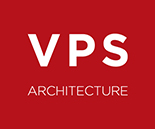Our Approach
Our process addresses building design holistically, where all aspects are harmoniously integrated. VPS Architecture’s design principles are to always listen and engage with our clients to interpret their vision into a built experience.
VALUE ADDED DESIGN SOLUTIONS
VPS Architecture offers value-added design solutions that improve our clients’ environment. We add value for our clients by advocating for evidence-based designs that improve the human experience. Utilizing current research and insights, we strive to create environments that will enhance and strengthen our clients’ bottom lines.
We apply a collaborative method to discover better ways to deliver our design services. Our team of experts actively engages clients in the research process as we review relevant literature, test hypotheses, and offer a wide range of evidence-based solutions. Whether a client aims to implement findings from prior studies or develop original research that might just change the industry, VPS is ready to help.
Our team of architects and interior designers has led projects for top providers in the region. We are committed to adding value for clients that seek the best possible experience throughout the design process.
EVOLVED | COMMITTED
Since 2010, much has changed for VPS Architecture. Our approach to building design teams with outside consultants also evolved. We began broadening our partnerships with more industry leaders. Today we have successful partnerships with numerous industry peers that bring a wide variety of expertise, including specialty knowledge in niche markets. This allows us to tailor our consultant teams to the specific needs of the project.
VPS Architecture has also adjusted the approach to project management. A detailed analysis of the goals and complexity of the project are the foundation of our process. Once the goals and complexities are understood, design timelines and estimates of construction cost are carefully developed. Our goal is to align expectations with realistic outcomes to ensure overall project success.
The design and coordination processes have evolved through more efficient use of technology, which includes virtual meetings and Building Information Management (BIM). With the use of BIM processes, building systems are integrated within the architecture and structure of the building, which results in greater quality control of the design process.
